| Stein Collectors International | ||||||||||||||||||||||||||||||||||||||||||||||||||||
Finishing Shopsby John McGregor (SCI Master Steinologist, Dec.)
|
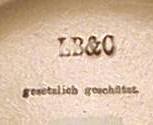 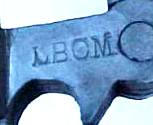 |
LB&C was more than likely, L. Bauernfreund & Co., pewter foundry, Munich, founded 1883. They employed 30 people and remained in business until World War I. They produced pewter fitted beer steins and services in porcelain, stoneware, faience and glass. They won exhibition awards in Nuremberg in 1885 and Amsterdam in 1887. We find some porcelain character steins made by a factory other than Freising but in the narrow bodied early Freising style that have "LBCM" stamped into their pewter, usually on the shank. Mike Wald noted that he had encountered an LB&C stein with "LBCM" stamped on the shank, making the connection between the two marks. All of the known steinzeug, or salt glaze stoneware pieces, marked LB&C were made by Hauber & Reuther. |
 |
Plato & Co. is an unidentified finishing shop. Where it was located is also unknown. The only stein I've seen with this mark is a Hauber & Reuther, model #160. There are several such pieces reported. |
 Hauber & Reuther |
Theodor Wieseler - Theodor Wieseler was located in Nuremberg. He owned an "Einrichtungs Magazinen," or home furnishing warehouse. His establishment provided everything for the home including beer steins and part of the business was a "Bierkrugfabrik" with "Zinngiesserei" and "Malerei," or finishing shop with pewter and paint shops. In 1901, he began an expansion of his business outside of Nuremberg. The company is still in business, as one of the oldest, and largest, wholesale co-ops in Germany. Today, the company is headquartered in Essen, Germany and is called "Die Nürnberger Bund Produktionsverbindungshandels GmbH." |
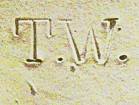 Merkelbach & Wick |
Note that the all lower case "geseztlich geschutzt" on the upper mark is the same size and font as that used on HR steins and is same used with the LB&C mark above. Many factories made steins for Theodor Wieseler, HR, Merkelbach & Wick, Gerz, and Matthias Girmscheid to name a few. |
 |
L. Ostermayr - This Nuremberg firm is a seller of fine gift wares and souvenirs, including ceramic and metal items. They are still located at Köningstrasse 35-37, but only occupy 1/3 of the building. See an old L. Ostermayr brochure HERE. |
 |
Felsenstein & Mainzer - Located in Nuremberg, this firm probably did very little in the way of decoration, they were first and formost a Zinngiesserei and distributer of pewter wares. |
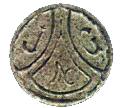  |
Jacob Goldschmidt - Located in Nuremberg and founded in 1890. They purchased many of their steins from Marzi-Remy. |
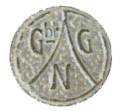 |
Gebrüder Goldschmidt - In 1906 Jacob's brother, Moritz, joined the firm. They were primarily pewterers. |
 |
Ludwig Mory - Ludwig Mory's pewter shop is no longer located in the Marienplatz in Munich. The shop has moved to Amalienstrasse 16. His mark can be found on a few stoneware pieces that he obviously purchased to sell through his shop. |
 |
Joseph Reinemann - The firm was founded in Munich in 1873. In 1880, Otto Lowenstein took over the company, but retained the Reinemann name. Reinemann (Otto Lowenstein) was partnered with pewterer Josef Lichtinger the brother of Ludwig Lichtinger. For a while, their product line included steins with decor produced specifically for them, by Franz Ringer. |
   |
Martin Pauson - One of the better known pewterers, Pauson ran a pewter and paint shop located at 5 Neuhauserstrasse, Munich. |
 |
Joseph Mayer - Was located at 1 Löwengrube, Munich. The firm was founded in 1888 and specialized in painting porcelain. |
 |
B&C - This is an unidentified finishing shop that bought most of its steins from Marzi-Remy. |
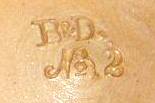 |
B&D - This is an unidentified finishing shop that bought many of its steins from Reinhold Hanke. |
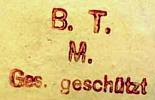 |
Brüder Thannhauser - The Brüder Thannhauser, Albert and Josef, referred to their firm as a "Kunstzinngusswaaren-Fabrik un Malerei" a manufacturer and seller of artistic cast pewter and paint shop, that was located at 16 Kaufingerstrasse, Munich. They produced some of the finest pewter of the time. It would be a real toss up between the Brüder Thannhauser and Ludwig Lichtinger as to whose pewter was of finer quality. |
  |
TP - The owner of this mark was Johann Peter Thewalt, NOT Paulus & Thewalt, regardless of what you may read in a couple of leading reference books. See the "fabrikmarke" or factory logo just to the left. We have an e-mail from Paulus and Thewalt that reads as follows: "Dear Mr. Gray, At first let me thank you for your request. We are sorry to tell you that we never produced Bierkruge. We produce and deal with pharmaceutical instruments. Best Regards, Torsten Bowe, Paulus & Thewalt GmbH & Co." For more on this mark see the article on the SCI web page. |
 |
Wekara - WEKARA stands for Wilhelm E. Krumeich aus Ransbach (WEKARA) The firm operated from 1845 to ca.1978. References disagree on the closing date, some say 1910 and others 1978. There are some inexpensive "souvenir" steins marked WEKARA that are definitely post WWII. They purchased steins from many sources with their mark applied and were one of the very few finishing shops that purchased steins from Mettlach other than 1526 and 1909 blanks. Another was Friedrich van Hauten of Bonn |
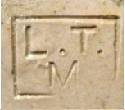 Marzi-Remy |
L.T./M. - An unidentified shop, possibly L. Thannemann of Munich, that purchased steins from Marzi-Remy, Reinhold Hanke and Duemler & Breiden. The upper mark is found on Marzi-Remy steins and the lower on Reinhold Hanke and Duemler & Breiden pieces. There is a possible link between L.T./M. and Jos. Mayer, but exactly how they were linked is, as yet, undetermined. |
 |
A.Wahnschaffe - The entire logo reads: "A. Wahnschaffe königl.(ich) bayer.(ischer) Hoflieferant Nürnberg." This tells us that A. Wahnschaffe was located in Nürnberg and that he was "Purveyer to the Royal Bavarian Court." According to a tourist guidebook ca.1905, the company was located at Josephsplatz 18 and they dealt in "Retail and wholesale toys, carvings from the Bavarian highland, portfolios, fancy goods and souvenirs of Nürnberg. To date, only two steins are known with this mark, both were manufactured by Hauber & Reuther. |
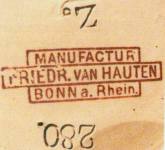 |
Friedrich van Hauten - Located in Bonn, at 31-32 Sternstrasse, they were decoraters of glass, porcelain and stoneware. Founded in 1890, they were in business until ca.1914. They purchased their bodies from seveal sources including V&B and Merkelbach & Wick. Like A. Wahnschaffe above, they identified themselves as a "Hoflieferant," or "Purveyer to the Royal Court." In the case of van Hauten it was the German, Imperial Court. |
 |
S.T. - Unknown finishing shop. This mark is seen only rarely and it is found on steins with elaborate hand painted scenes. The blank stein bodies were produced by Marzi-Remy. |
 |
P.W. - Unidentified finishing shop, possibly Peter Willems. This mark is seen only rarely. The illustrated mark was found on a Marzi-Remy stein. |
 |
W. Wild. marks are rare. One found on a Merkelback & Wick stein, read "W. Wild / Inh. Hugo Lindner / München." Inh. = Inhauber = owner, indicating that W. Wild was a subsidiary of H. Lindner. I have no address for either other than Wienerplatz. |
 |
M. Wildmann - Probably located in Munich. Wildmann's marks are rare and are confirmed, so far, on Merkelbach & Wick and HR steins. |
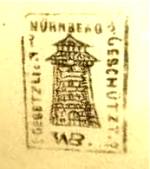 |
W.B. - Unidentified distributor. This mark is seen only rarely. Note: This mark has been identifed as that of Wieseler & Beeri. Click on image for more information. |
 |
Gebr. A./M. - Unidentified distributor, probably from Munich. This mark was found on a Marzi-Remy "black handle" stein. Note: This mark has been identifed as that of Gebrüder Allmann München. Click on image for more information. |
